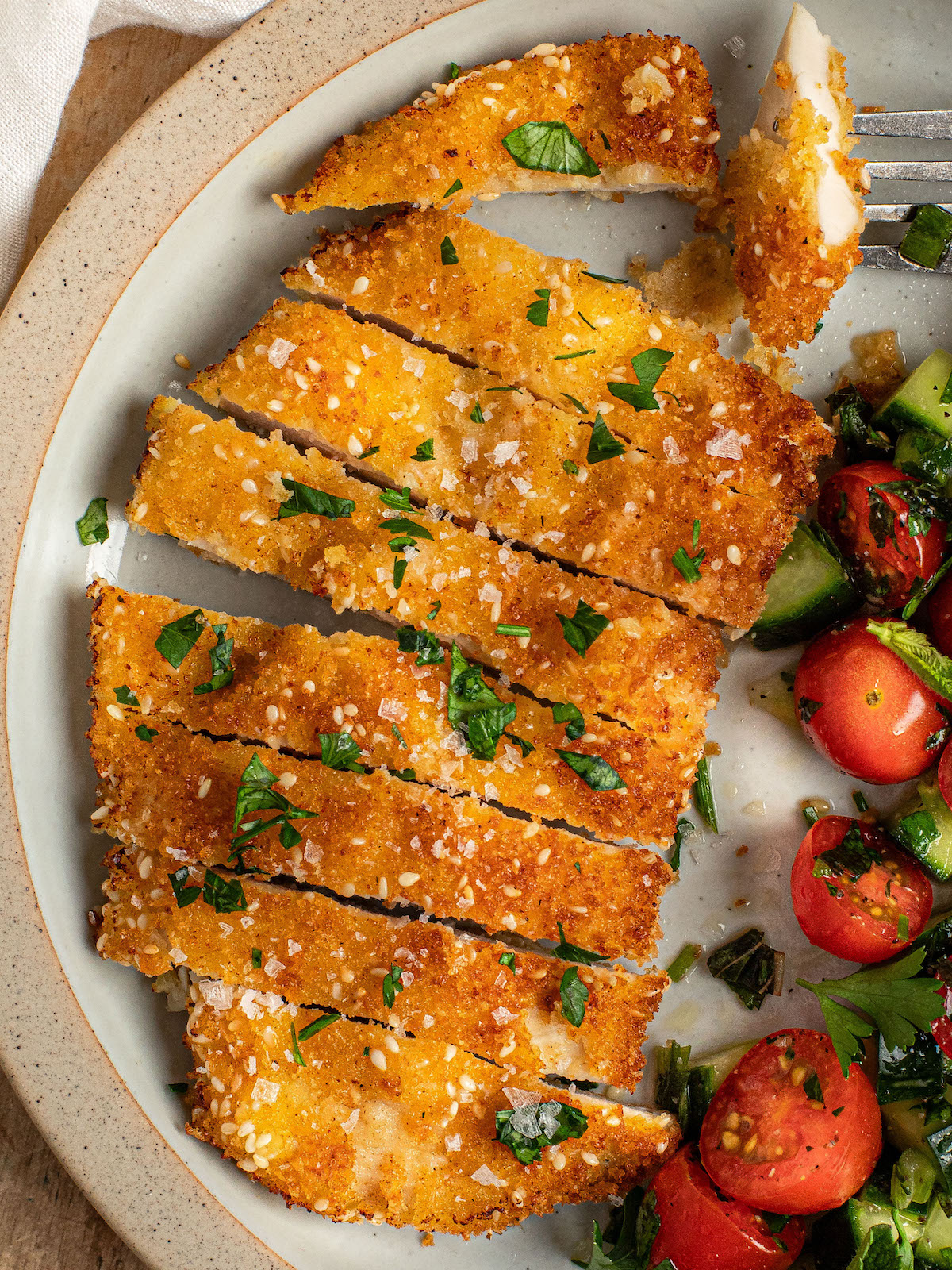Chicken Schnitzel
5.0
(23)
Your folders
Your folders
Prep Time: 35 minutes
Cook Time: 10 minutes
Total: 45 minutes
Servings: 4
Author : Jennifer Segal

Ingredients
Export 9 ingredients for grocery delivery
Instructions
Step 1
Slice the chicken breasts in half horizontally to form flat fillets. Place a fillet in a resealable freezer bag and use a meat mallet or rolling pin to pound to an even thickness between ⅛ and ¼-inch thick. Remove the pounded cutlet and set aside. Repeat with the remaining pieces of chicken.
Step 2
Make the brine: In a medium bowl, combine the water, kosher salt, and sugar. Stir until the salt and sugar are dissolved. Add the pounded chicken to the brine and let sit for 30 to 45 minutes (no longer or the chicken may be too salty). Remove the chicken from the brine and pat dry with paper towels.
Step 3
In a large shallow bowl, mix the panko, pepper, fine sea or table salt, garlic powder, paprika, and sesame seeds. Place the flour in another shallow bowl. Beat the eggs in a third bowl. Set up a breading station in this order: flour, eggs, panko.
Step 4
Dredge the chicken in the flour, coating evenly on both sides; dip in the eggs, letting any excess drip off; then dredge in the panko mixture, turning and patting to adhere. Place the breaded chicken on a plate and repeat until all the chicken is breaded.
Step 5
Line a 13 x 18-inch baking sheet with paper towels. In a large nonstick skillet, heat about ⅛ inch of oil over medium heat until hot and shimmering. Place two pieces of chicken in the pan, and cook until the first side is golden brown, 2 to 3 minutes. Carefully flip the chicken and cook for another 2 to 3 minutes, until golden and cooked through. (If the chicken is browning too slowly, increase the heat to medium high.) Place the cooked chicken on the prepared baking sheet. Cook the remaining chicken in the same manner (you shouldn’t need more oil). Transfer the chicken to a serving platter or individual plates. Serve with lemon wedges, if desired.
Step 6
Note: As tempting as it might be to use store-bought thin-cut chicken breasts for this recipe, pounding the chicken yourself offers numerous advantages. First, it both tenderizes the meat and ensures a consistent thickness for evenly cooked, juicy meat. Second, pounding achieves a more balanced breading-to-chicken ratio; with thin-cut breasts, you get the feeling of eating more breading than chicken. Finally, thin store-bought cuts cook too rapidly, risking undercooked breading or overcooked chicken.
Step 7
Pro Tip: When breading chicken, use one hand for the dry coatings and one hand for the wet. It’s much less messy this way.
Step 8
Note: Nutritional information was calculated assuming that approximately ¼ cup of the oil is absorbed into the chicken when frying.